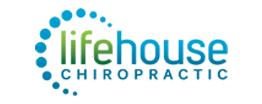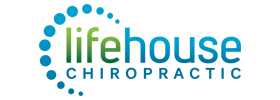Shining the Light on Vitamin D

Observation:
It’s been a gray and gloomy winter. I’m ready for some sunshine! I am going to bring you the most up to date information on the sun and try to alleviate the confusion and conflicting information you’ve heard about the sun and its affects. Of all the health benefits of sensible sunlight exposure, vitamin D, which is produced in the skin in response to UVB radiation, is the most important. Vitamin D is vital for maintaining your health.
Verification:
Vitamin D is Vital
- Vitamin D is synthesized in the skin from cholesterol in response to the absorption of UVB rays. It gets converted in the liver, is transported to the kidneys, and goes to the “brain” or nucleus of every cell, which then influences the cell’s DNA toward healthy pathways.
- Most of us from southwestern Ontario test low in vitamin D, specifically, vitamin D3,
- Not surprising, since we spend hours indoors, we have long, gray fall, winter and springs, and we slather on the sunscreen in the summer.
- Optimal vitamin D concentration in the body correlates with
- Improved immune function
- fighting cancers (Breast cancer has been described as a “vitamin D deficiency syndrome.”) Research shows that optimizing vitamin D levels can cut in half the risk for sixteen different types of cancers including, pancreatic, lung, ovarian, breast, prostate and skin cancers. [1]
- preventing respiratory tract infections [2]
- reducing allergies, hives [3] and asthma [4]
- Reduced risk of diabetes [5]
- Improved brain function
- Enhanced fat burning potential [8]
- Improved alertness and more regulated sleep cycles [9]
- Healthy blood pressure, with reduced risk of heart attack and stroke [10]
- Prevention of atherosclerosis [11]
- Cardiovascular health [12]
- Improvement in skin conditions, such as, psoriasis dermatitis, scleroderma, eczema [13]
- Better oral health and less number of cavities [14]
- Longevity [15]
- Improved immune function
- Since Vitamin D is so important to a healthy life, we need to make sure we are getting a sufficient daily dose of vitamin D.
Action:
Perhaps the single most important thing that you can do for yourself and your family’s health is both easy, safe and inexpensive… get more Vitamin D
Because Vitamin D3 is not found in high enough amounts in most foods, there are two ways to acquire healthy levels …
- Sensible sun exposure [16]
- According to Dr. Mayer Eistenstein, [17] a medical doctor and lawyer, and Dr. Joseph Mercola, an osteopathic physician [18], to attain acceptable levels of 150-200nmol/L, we need 10-15 minutes of mid-day sun with 40% exposure on a daily basis. For those of us living in southwestern Ontario, this is not possible.
- If you have light coloured skin, stay out in the sun just long enough that your skin turns the very lightest shade of pink or one shade darker is you are dark skinned. This usually occurs within 10-20 minutes of exposure. It is best to slowly build your sun exposure up to this 10-20 minute limit. Always error on the side of caution, and you should never get sunburned!
- Protect your eyes and face.
- Once you’ve reached your daily sun exposure limit, move into the shade, or use a non-toxic lotion with SPF protection. Look for one that includes zinc oxide and/or titanium dioxide, two naturally occurring minerals that will protect your skin form UV rays. For other options and a safe sunscreen guide, visit the Environmental Working Group’s site, ewg.org.
- If you get sunburned, apply pure aloe vera gel.
- Don’t sun bath through a window, the window will not increase your vitamin D levels, but it will still allow UVA rays to penetrate.
- Continuing exposure beyond the minimal dose will not increase your vitamin D production, but it will increase your risk of skin damage.
- The risks associated with insufficient vitamin D are far greater than those posed by skin cancers.
- Supplementation
- How much vitamin D3 to take
- Have your vitamin D blood serum tested twice a year until you know your levels and what it takes to keep it at an optimal level [19]
- Most people have been advised to take 1000-2000IU/day to maintain levels above 50nmol/L to prevent Rickets. This link to a chart, provided by grassrootshealth.org, shows that levels should be greater than 150 nmol/L to lessen the likelihood of diseases related to Vitamin D deficiency.
- Vitamin D testing often reveals that most people living in Canada need to supplement with 5000 IU for maintenance or 10,000 IU per day until health levels are reached and verified by testing.
- If you are taking oral vitamin D3 supplements, it is wise to take vitamin K2, as well, 100-250 micrograms(mcg)/day. [20,21,22]
Summary:
- Regular, sensible sun exposure dramatically lowers your risk of cancer and heart disease, as well as a host of other health concerns, and is the best way to get your vitamin D.
- Supplementation is necessary for most people in southwestern Ontario.
- Test blood levels of vitamin D regularly as the best way to check whether you have adequate amounts for optimal health.
- It is one thing to get the right amount of nutrients, but your body needs to absorb them. Make sure you have proper nerve supply to every organ in your body to enhance absorption of vitamin D.
References:
- http://www.ncbi.nlm.nih.gov/pubmed/18270398
- http://www.ncbi.nlm.nih.gov/pmc/articles/PMC4553208/
- http://www.annallergy.org/article/S1081-1206(14)00012-X/abstract
- http://www.ncbi.nlm.nih.gov/pubmed/25139052
- http://www.ncbi.nlm.nih.gov/pubmed/25801026
- http://www.ncbi.nlm.nih.gov/pmc/articles/PMC2908269/
- http://www.ncbi.nlm.nih.gov/pubmed/26783092
- http://www.ncbi.nlm.nih.gov/pmc/articles/PMC3514135/
- http://www.ncbi.nlm.nih.gov/pubmed/22246808
- https://www.vitamindcouncil.org/health-conditions/hypertension/
- http://www.ncbi.nlm.nih.gov/pubmed/25801026 Oh J, Riek AE, Darwech I, Funai K, Shao JS, Chin K, Sierra OL, Carmelier G, Ostlund RE, Bernal-Mizrachi C. Deletion of macrophage vitamin D receptor promotes insulin resistance and monocyte cholesterol transport to accelerate atherosclerosis in mice. Cell Reports, published online March 19, 2015.
- http://www.ncbi.nlm.nih.gov/pubmed/20854958
- http://www.ncbi.nlm.nih.gov/pubmed/22395583
- http://www.ncbi.nlm.nih.gov/pubmed/22110779
- http://ajcn.nutrition.org/content/86/5/1420.long
- http://cjasn.asnjournals.org/content/3/5/1548.full
- homefirst.com
- mercola.com
- grassrootshealth.org
- http://www.ncbi.nlm.nih.gov/pubmed?Db=pubmed&Cmd=ShowDetailView&TermToSearch=11180916&ordinalpos=1&itool=EntrezSystem2.PEntrez.Pubmed.Pubmed_ResultsPanel.Pubmed_RVDocSum
- http://www.ncbi.nlm.nih.gov/pubmed?Db=pubmed&Cmd=ShowDetailView&TermToSearch=17145139&ordinalpos=1&itool=EntrezSystem2.PEntrez.Pubmed.Pubmed_ResultsPanel.Pubmed_RVDocSum
- Rheaume-Bleue, K. (2013). Vitamin K2 And The Calcium Paradox. Collins.
- Mercola, J. (2015). Effortless Healing. New York, NY: Harmony Books.
- www.vitamindcouncil.org
CONVENIENT
OFFICE HOURS
Give us a call and let's find out how we can make your time in our office as convenient for you as possible.
Monday
7:30am - 11:00am
3:00pm - 6:00pm
Tuesday
3:00pm - 6:00pm
Wednesday
7:30am - 11:00am
3:00pm - 6:00pm
Thursday
3:00pm - 6:00pm
Friday
7:30am - 11:00am
Saturday
Closed
LifeHouse Chiropractic
520 Springbank Drive #4
London, ON N6J 1G8
Phone (519) 204-9460
Fax (519) 601-9461




